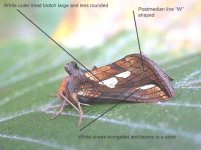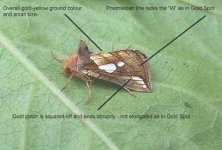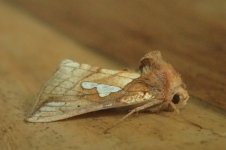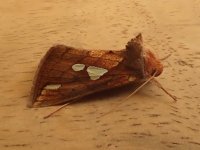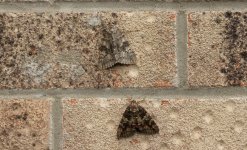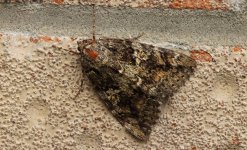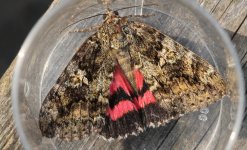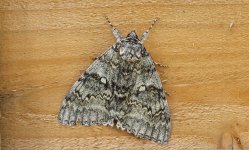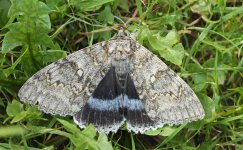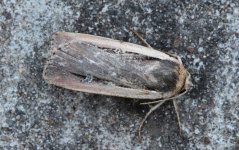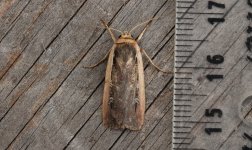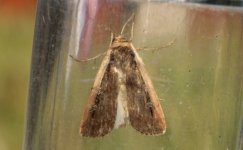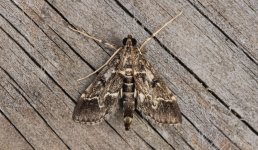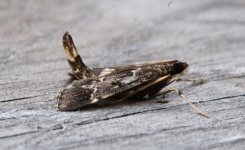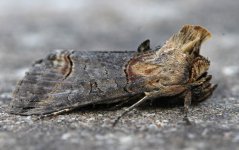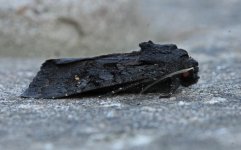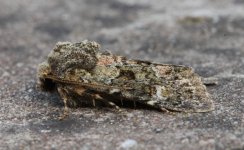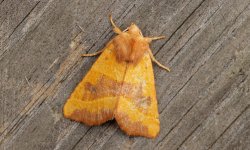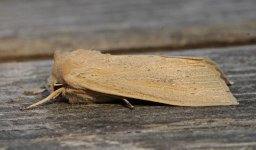Just got the results back, our recorder writes.....
Hi Andy,
I’ve dissected your moth (a male, fortunately – they are easy to tell apart, but females of these two are much more difficult!)
Not what you’ll be wanting to hear, but unfortunately a typical male Gold Spot (not Lempke’s) in all four key aspects of the genitalia.
Before I dissected it, I had a look online to see if there were any other features of the external appearance that might be a better guide than the* ones people normally go by. I came up with one interesting possible – a “W” shape in the postmedian cross line (see attached downloaded web photos) in Gold Spot, but not in Lempke’s. I examined this in yours with* a hand lens – and if anything, yours had an even stronger “W” shape than in the attached photo of the Gold Spot. So, as it did turn out to be a Gold Spot and not a Lempke’s – I wonder if this is a good feature? Only time and more dissections will tell!.'..............................
So, let this be a lesson to us all and strike all those undisseccted Lempke's, from your lists!
I attach an illustration of the point she makes about the 'W' feature.





